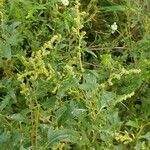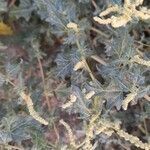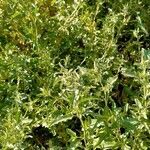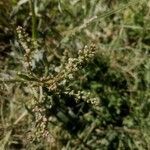Herbs annual, 20-80 cm tall. Stem erect or decumbent, usually much branched, bark of lower stem exfoliating; branches slender, obliquely spreading. Petiole short or to 2 cm; leaf blade linear-oblong to triangular-ovate, 2-7 × 1-4 cm, abaxially densely gray-white furfuraceous, adaxially green and not furfuraceous, base cuneate to broadly so, margin irregularly serrate, sinuately lobed, remotely toothed, or entire, apex acute or shortly acuminate, with pellucid tip. Inflorescences axillary glomerules forming panicles on upper stem and branches; rachis densely furfuraceous. Male flowers: perianth obconic, 5-parted; stamens 5; anthers oblong. Fruiting bracts connate proximally, rhombic-ovate to ovate, basal central part yellow-white with prominent veins, sometimes with a few tuberculate appendages, margins ± dentate. Utricle ovoid or subglobose, compressed; pericarp white, membranous, adnate to seed. Seed vertical, yellow-brown to red-brown, 1.5-2.5 mm in diam.; perisperm yellow-brown, solid. Fl. and fr. Jul-Sep.
An annual herb. It grows from 20-80 cm tall.




